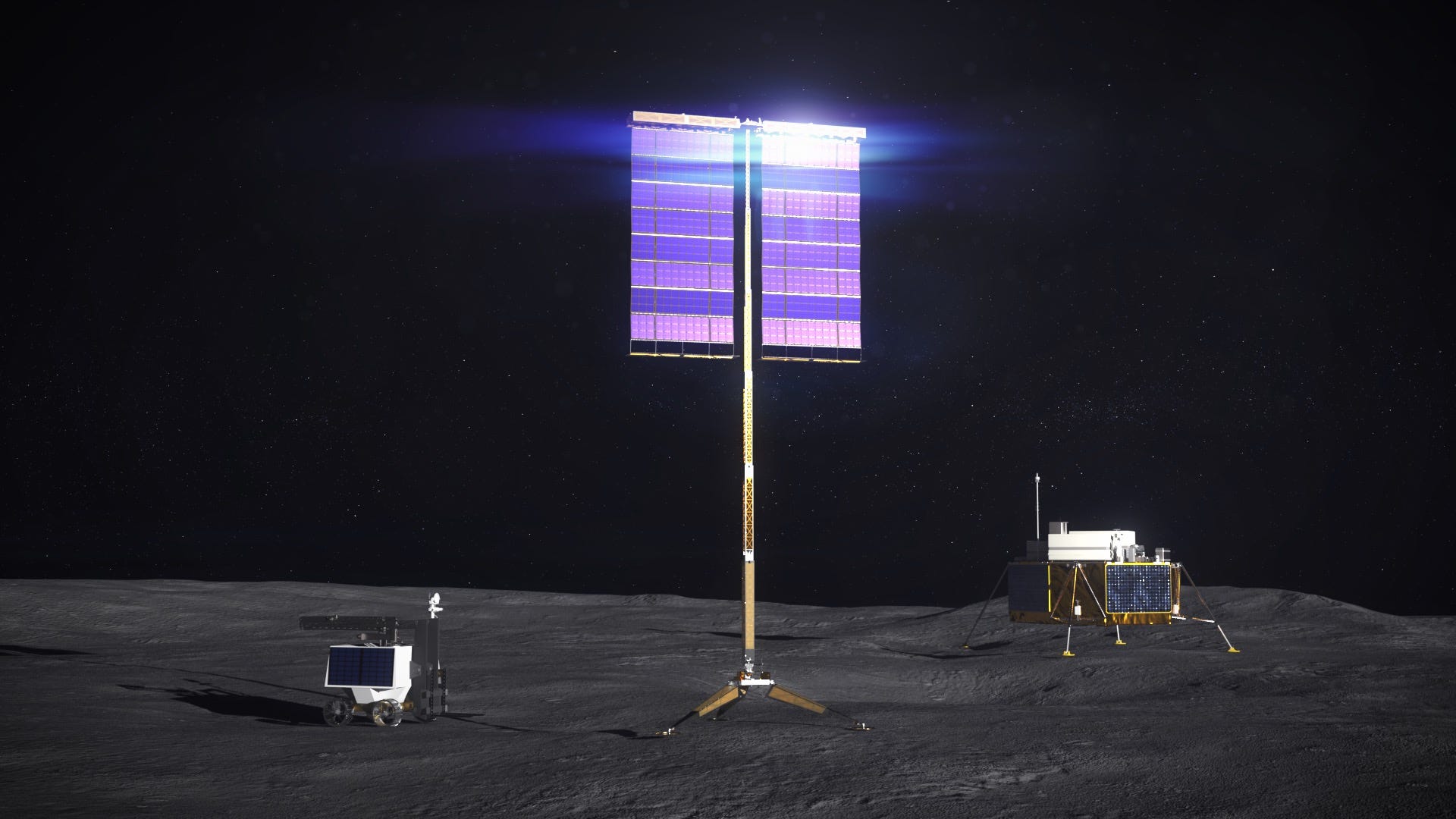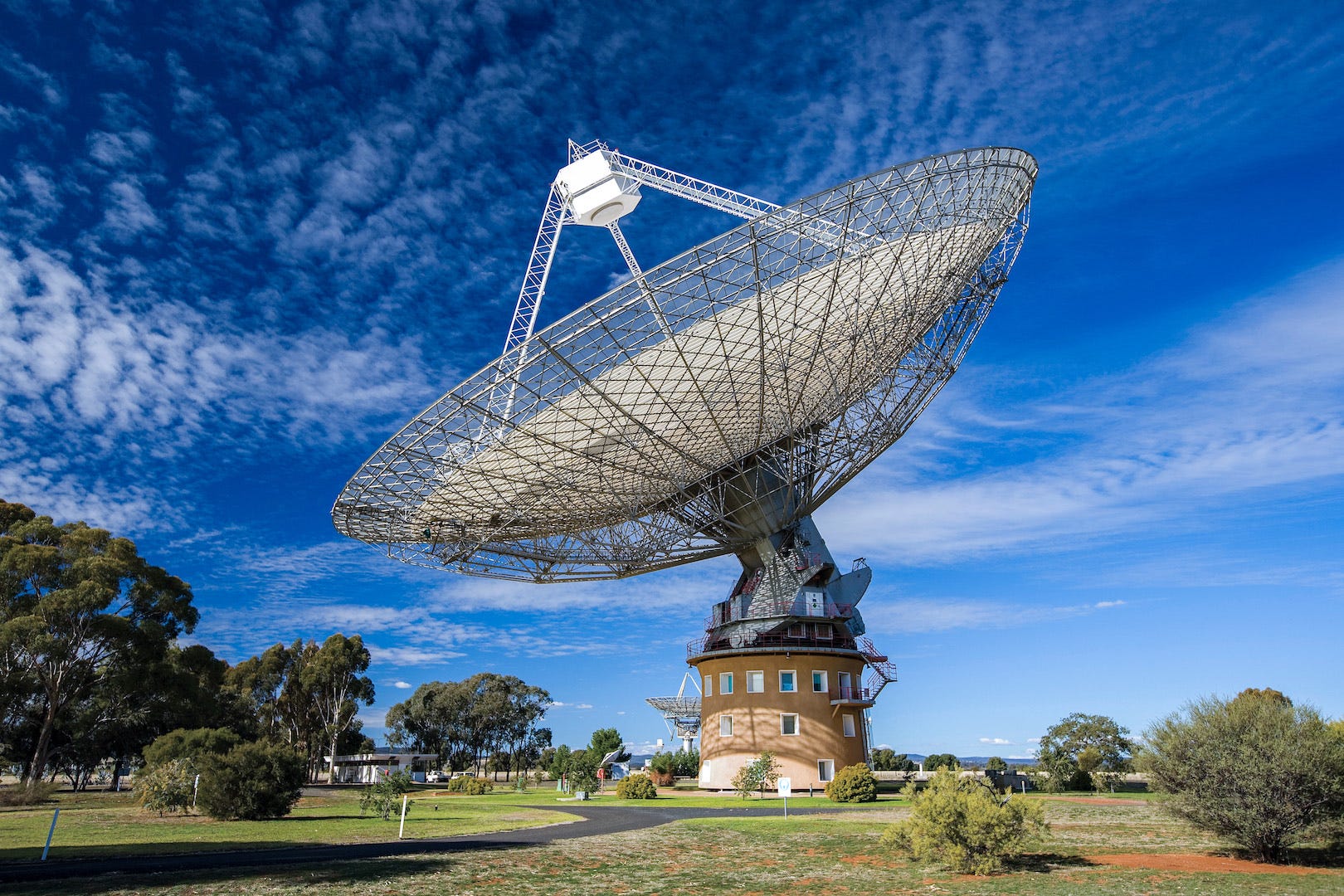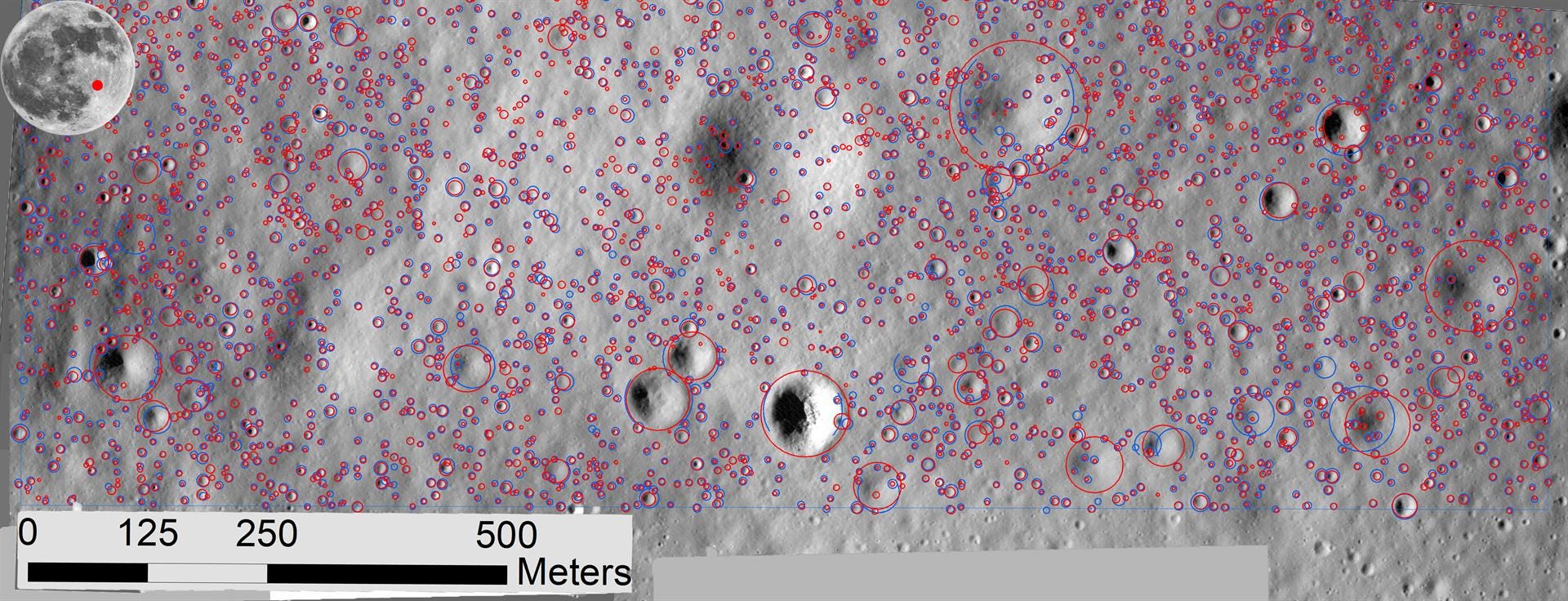Moon Monday Issue #20
NASA weighs in on lunar solar power, Intuitive Machines signs ground station agreement with Parkes, automated crater counting, a lunar ark, and more developments in the lunar space.
Highlight
Spacecraft on the Moon’s poles need to operate in extremely challenging conditions. For one, the Sun is always close to the horizon, meaning solar panels can be deprived of sunlight with something as mundane as small rocks or gentle slopes in the wrong direction. Previous studies from ESA and NASA have shown that even on the very best high-altitude polar landing sites, spacecraft would need solar panels placed at least 2 meters above the surface to generate adequate power. Taking into account the uneven polar terrain, the ESA study shows that panels 5 meters above the surface will generate significantly more power than at 2 meters.

Building on that knowledge, NASA has taken its first step in designing solar panels for Artemis missions at the lunar poles. The agency has awarded $700,000 each to five companies to develop vertical solar arrays that auto-deploy up to 10 meters in height, retract for relocation, be stable on steep terrain, be resistant to abrasive lunar dust, all while minimizing mass and volume so that they can be delivered to the Moon.
NASA will down select up to two companies next year and provide up to $7.5 million to each to mature the designs, build prototypes and perform environmental testing. Ultimately, NASA will deploy one such systems as it starts to build Artemis Moon base.
Exploration
Last week Rocket Lab placed a second Photon spacecraft in Earth orbit––the first one was in August 2020––to build spacecraft heritage before they carry out a mission for NASA. The Photon spacecraft will test out new power management, thermal control, attitude control, deep space radio capability, an upgraded reaction control system and a navigation system. Later this year, a Photon spacecraft will deploy the CAPSTONE satellite built by Advanced Space for NASA on a trajectory to the Moon. Costing under $10 million, CAPSTONE aims to demonstrate the feasibility of the unique fuel-saving lunar orbit that the NASA-led Gateway lunar station will be in later in the decade.
Intuitive Machines has signed a new 5-year agreement with CSIRO to use their Parkes Radio telescope in Australia for spacecraft communications during their multiple lunar missions, starting with their first mission under NASA’s CLPS program in November 2021. Since NASA urged CLPS providers to use ground stations outside of the agency’s Deep Space Network, Parkes represents the latest piece, and one with the highest bandwidth, in Intuitive Machines’ commercial deals with ground stations.

South Korea’s President, Moon Jae-in, has vowed to launch the nation’s first robotic lunar lander on a domestically developed rocket by 2030. He announced this in a speech after observing successful combustion tests of the first stage engines of KSLV-2, the nation’s first indigenously developed rocket due for its maiden launch in October.
NASA engineers have begun a new series of water impact drop tests with a test version of the Orion capsule to better understand what the crew will experience when landing in the Pacific Ocean after an Artemis mission. While NASA performed similar tests previously, the current tests use a new configuration of the crew module that represents Orion’s final design. Meanwhile, NASA has begun assembling the core stage of the SLS rocket to be used on Artemis II in 2023 to send humans around the Moon.
Science
Researchers from the Curtin University in Australia have developed a new algorithm to reliably identify craters (abstract) on the Moon that are less than a kilometer wide, which they say is the scale where things start getting out of hand for manual counting. After training their algorithm on thousands of manually identified small craters in high resolution images from NASA’s LRO spacecraft, the researchers tested it out on datasets containing two different terrains. In about 7 minutes, the algorithm detected more than 800,000 craters between 6 to 300 meters with a very good accuracy. With the growing availability of high-resolution images, automated crater counting will be crucial in determining ages of smaller features on the Moon’s surface and other planetary bodies.

Using data from magnetometers onboard NASA’s Lunar Prospector and JAXA’s SELENE orbiters, researchers have made a new large-scale map of local, anomalous magnetic fields on the Moon with higher resolution than before. The observed locations of these magnetic anomalies remain consistent with the hypothesis that the Moon-impacting body that created the large Imbrium basin deposited iron in groups radially aligned to the basin and a concentrated at the diagonally opposite point on the farside.
More Moon
Researchers from University of Arizona have proposed that we preserve Earth life by storing frozen seed, sperm, and egg samples from 6.7 million species in a lava tube on the Moon. Compared to lava tubes on Earth that get eroded by earthquakes, plate tectonics and other processes, lunar lava tubes are not only bigger but also largely untouched since 3 to 4 billion years, making them a good candidate for such storage. They also provide shelter from solar radiation, micrometeorites and extreme temperatures changes on the Moon’s surface. The team’s initial concept of an underground preservation facility requires about 250 heavy lift rocket launches to complete, not in the realms of impossibility considering the International Space Station required over 40 launches.

Thank you Epsilon3 for supporting me and powering this edition of Moon Monday.
Everyone, I’m publishing this one-of-a-kind Moon exploration newsletter for free, with no ads. And it will stay that way. If you like my work, support me to keep it going. Monthly supporters will be credited in future Moon Monday issues with a link to their website/social.
